The use of photography as reference material for painting is a controversial topic in the world of art. Some artists argue that it is wrong to paint from a photograph and that only painting from observation can produce truly compelling works of art. Others, on the other hand, argue that painting from a picture can be a powerful tool for artists and can only be beneficial.
Personally, I think photography can serve as a great tool for artists. However, photography does have limitations that can hold you back considerably in your painting if used incorrectly. Understanding the differences between painting from life vs photos is important for using photos successfully as a reference tool. Today, we delve deeper into this topic and explore 5 things you should know about painting from observation vs painting from photos.
So, let’s get started with the first thing you need to know when painting from a reference image…
#1 Use your observation experience when painting from a picture

One of the most significant benefits of painting from life is that it gives you a deeper understanding of how light and color behave in the natural world. When you paint from observation, you learn to see the world around you in a new way. You begin to notice the subtle changes in color and tone that occur as the light shifts throughout the day.
You also learn to see colors in a new way. As you realize that they are not static, but rather constantly changing in response to the light. This knowledge is invaluable when it comes to creating a powerful and convincing painting.
Painting from photos with background knowledge

Many great artists of the past, including Degas, used photographs as reference material for their work. However, Degas had years of experience under his belt of painting from observation before ever turning to photography. The key to using photography well as reference material is to first have a solid background in painting from observation. With such a background you have an intuitive understanding of how light and color work in nature.

The problem with just painting from a picture without any prior experience with observational painting is that you can fall into the trap of simply copying what you see in the photo. This can lead to a painting that looks flat and lifeless. To avoid this, it is important to use your own background in painting from observation to make adjustments in your photo reference. This will help to prevent your work from looking like a mere copy of the photograph.
#2 The way we see color and light is different
Modern digital cameras actually allow more light to be recorded by the sensor than our eyes can. That is why when we look at photographs we usually see them in a brighter light. They are brighter than if we were looking at the subject directly. So, cameras don’t capture light and shadow in the same way that we see it in real life.
However, when you have experience of painting from observation and understand how light actually behaves, you will know how to adjust and change these things when painting from a picture.
How color is different in photographs
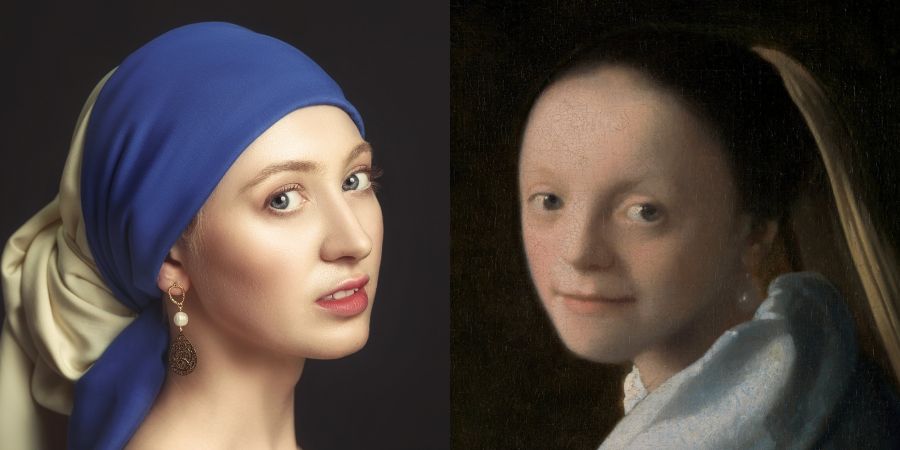
The way the camera captures color is also different from how we see it in real life. This is very critical to understand, as it will help you to avert the limitations of painting from a photo. A camera’s photo receptor’s do not record more details as light gets brighter. This makes bright areas appear washed out and less saturated. On the other hand, in shadow regions, details are often lost and colors appear muddier than they do to our eyes.
Real life vision vs camera vision example
The human eye is incredibly good at seeing subtle changes in color and brightness. It can adjust its sensitivity to pick up nuances that a camera simply cannot capture.

When working and painting from life you can capture the subtle changes in color temperature that occur. For example, in a portrait painting. This does not mean that you cannot successfully paint a portrait from a photograph. What it does mean is that it is very important for you to understand how light and color work in nature. So that you can accurately represent the colors and hues of your reference.
#3 How depth perception of a photo vs human sight differs

Whenever we look at a subject with our own eyes, we see it from all dimensions. So, from the sides, top to bottom, directly in front of it, and we also get a peek at what is in front and behind it. The camera on the other hand just shows us what is facing the lens. This leads to a degree of flatness in photos. If you aren’t careful when using photo references you could create this flatness in your paintings as well.
How to create space in a painting when painting from a picture

To avoid this, be sure to observe the space in your photo reference and compare it to what you would see if you were present in the physical environment. Is there any overlap of objects? Are there different planes or layers that are visible? How far away are objects from one another? If something is further away make sure the edges are soft. You will need to understand and know all about edges in painting and how to use them.
These questions can help give a sense of depth and dimensionality to your painting. By paying attention to these details, you can create more compelling paintings and capture the same level of dimensionality as our eyes can. Take this into account when painting from a photo. So you can bring them to life in a way that captures the real environment.
#4 How to capture what is fleeting

Using photo references in painting is a huge advantage that allows the artist to capture difficult poses and expressions with greater ease. Artists from the past would out of necessity need to spend hours figuring out how to put together a composition. Such as Velazquez’s paintings of rearing horses.

By using photographic references, we can now access once-unavailable moments more readily. However, to create a good painting, it’s critical to just use the photograph as a mere guideline. And then imbue it with an abundance of knowledge and expertise drawn from life painting. This combination of photo reference and experience is crucial to produce compelling works of art.
Cameras can help with simplifying values

When painting in color, value can be tricky to figure out! Your camera becomes a helpful tool by placing a black and white filter over a photo of your subject matter. This will objectively show you what areas are darker and lighter in value. Even if you are painting something from real life, this tool can be invaluable. It can help you to accurately translate the values from a subject into your painting.
Additionally, it is also possible to use this technique when painting something based off a photo; by using the black and white filter, you can easily recognize which areas should be darker or lighter. This will also help you to simplify your values as well as group your values together in a few tones. This will help you to not get distracted by unnecessary detail. Simply group your values together and apply them to your painting!
#5 Don’t rely too heavily on a single source

Another potential pitfall of painting from a photo is that it can be tempting to rely too heavily on it. This can lead to a lack of creativity and originality in your work. To avoid this, it is important to maintain a balance between using the photograph as a reference and using your own imagination and creativity to bring something unique and original to the painting. By continuing to paint from life, you can gain the necessary skills and experience to make any photograph more dynamic and visually interesting. This will ultimately ensure that the painting captures the essence of your subject matter, rather than simply replicating it.
Painting from a picture and painting from life both have pitfalls
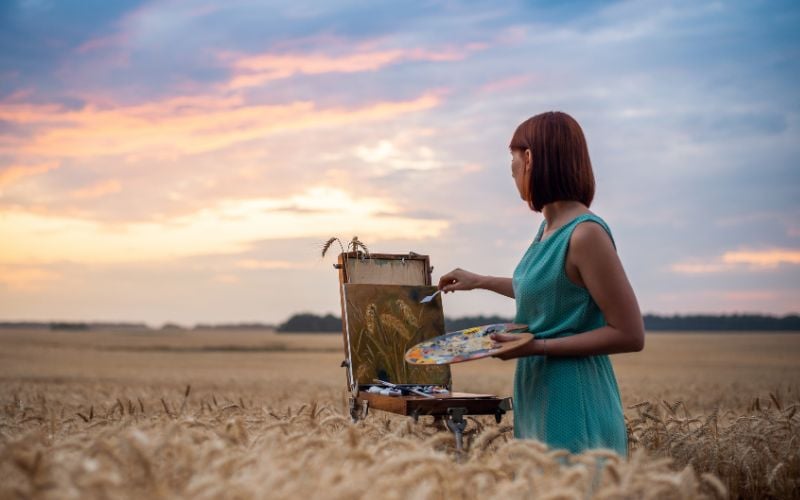
No matter what source you use for inspiration – whether it be a photo or painting from life – it is important to not rely too heavily on any single source. Even if you are painting solely from life, you could become too reliant on your subject. It’s important to be able to deviate from your subject matter if it will make your painting better.
By striking a balance between using photos as a reference and working from life, you can develop the skills to create beautiful art with your own imagination and creativity. Doing this will allow you to capture the essence of any subject matter while ensuring that your painting is interesting and visually compelling.
Use ALL visual sources at your disposal
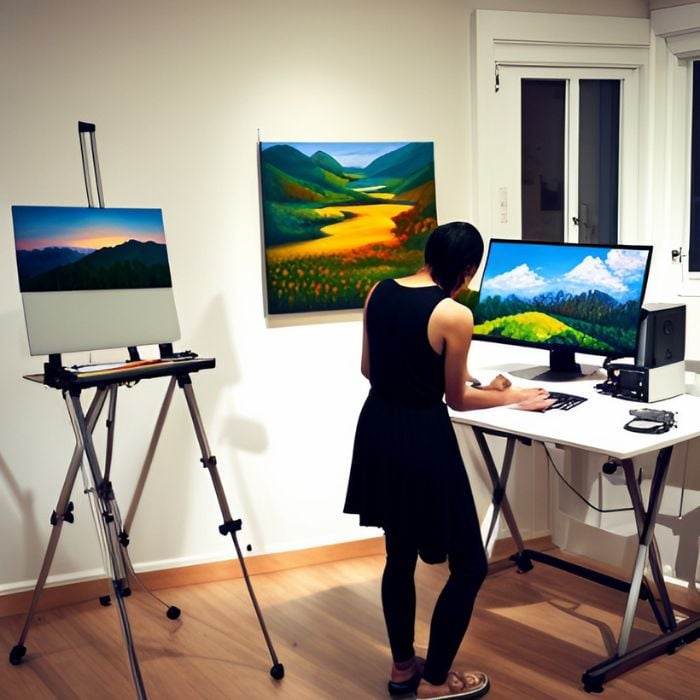
It is not right or wrong to paint from a photograph. Both painting from observation and using photography as a reference are enormously beneficial. However, it is important to be aware of the unique strengths and weaknesses of each approach. You can then use them in a way that serves your painting the best. With all the available resources at your disposal, including photography, you can create paintings that are powerful, unique and compelling.
Combine your experience with painting from life with photo references
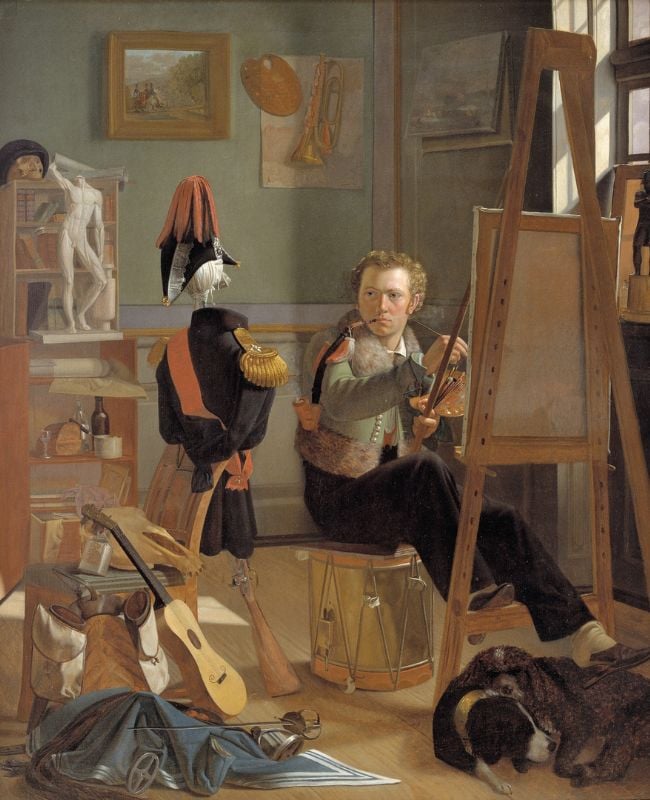
When painting from a picture, it is important to remember that the photo only captures the physical appearance of a subject. It does not capture the unique qualities of light and color that make a painting come alive. This is why it is essential for any painter to have an in-depth understanding of how color and light behave in real life before painting from a photograph.
Once you gain this knowledge, you can use it to infuse your work with the same atmosphere and emotions that exist in real life. For some helpful ideas and inspiration, you can check out my reference image library, here.
Do you use reference images often in your own work? Scroll down and leave a comment for me and let me know!
Save this guide on Painting From a Photo vs Real Life to your favorite Pinterest board!





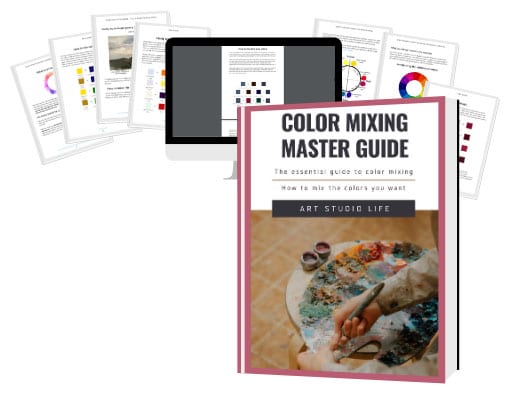
20 thoughts on “Painting From a Photo vs Real Life: 5 Things You Need to Know”
My work takes me to a lot of interesting and beautiful places. But being work, I rarely have time to paint while traveling. I use photos to help me remember what I have seen outdoors, and black and white is quite helpful for values. My composition is never a reproduction of a photograph, but rather what I have seen and details I remember from being there. Many times, it is actually a mixture of what I have seen from several locations combined into a single painting to make the composition more interesting. Your articles have helped me hone my skills and have made me a much better painter. I really appreciate what you share!
Thank you for sharing, am so glad to hear that my articles have helped a lot! That is quite understandable that your work trips do not allow you to do much painting. But really great that you are making the most of what you have available in terms of taking reference photographs and using your memories of different locations to put together compositions.
I paint mostly from photos from places I visit but I can’t spend enough time to be able to stay and paint
I tend to do a lot of landscape if I am painting still life I do it from real objects
Your advise was quite helpful thank you
Hi Ana, Am so glad to hear this article was helpful! Thats great that you do a combination of painting from photos and real life.
hi ,Elizabeth,thanks for the excellent articles, sometimes we just need a kick up the backside to try something different.you comments are really inspiring.,thanks
Hi Trevor, Thank you! Am very glad the comments in this article are inspiring and helpful – thank you for sharing!
So often I have to work from photos because i don’t have the money health or time to go find subject matter of my own to paint. So I work from Photos and try to change it up enough so that its my ideas being expressed. When I could obtain my own photos and pictures from years ago, i was the most proud because it was entirely mine through and through.
Yes, it is wonderful when you can work from your own photos as it does feel more like it is ‘yours’! If you do want to work from life, you really can just work from what you have already at your own or what exists in your immediate environment.
Hi Elisabeth.
Thank you for all the posts; I only paint/draw from photos but will give it a try outside soon. I have not been painting/drawing for some time, with a holiday away in little-ole UK, and now having work done in my home, I can’t seem to concentrate at the moment. I am constantly reading and going back to your excellent posts; so again many thanks for all you help and support. I know I am beginning to improve with my work thank to you.
Best regards.
Mike
Hi Mike, So glad to hear that you will give painting outside a try. There isn’t any experience quite like painting plein air – it can be hard but it is exhilarating at the same time. Am so glad to hear that my posts have been helpful – thank you for sharing!
Best wishes to you and best of luck with painting outside!
Thanks again Elisabeth, It looks like time has come to practice outside painting, but will take a reference photo if i do not finish. I am still quite slow at mixing colors, My stint as a teacher has nearly come to an end now I will have more time available to paint. This might just be what i need.
Lovely to hear from you Warren! Am very glad this article is helpful – I also learned some very helpful new things while doing research for it. Yes, that is a good idea to take some photos of your reference if you aren’t able to finish out of doors. Am glad that you will soon have more time to paint as your teaching position is coming to an end. Look forward to seeing your work!
I was born to artistic parents so I have a natural talent for art in many areas including photography, graphic art and painting. My experience as a graphic artist for television in my twenties and in advertising in my thirties gave me a range of approaches to my way of painting and capturing light effects. Using high contrast graphic art and working at earlier times in black and white television the true values of color during that time were emphasized. This assisted my understanding of color in media and the transition from the B&W to color television was also helpful in my learning process. Obviously, there is a great difference between the painter’s techniques and the type of art produced for any media including the art produced using digital programs such as Adobe. My preference for painting from photographs is purely to do with my need for privacy as I am a shy artist who does not like being watched as I attempt to express myself using pencil or brush. Being easily distracted I prefer to be alone. I usually take photos of people, buildings and scenery and often arrange these through conscious choices to produce a whole picture. This has assisted me in producing murals I was commissioned in places I have lived. I have very rarely used photos taken by friends but always give due credit in those cases. My knowledge of perspective and depth also helps in any of my artistic expressions.
Hi Stephanie, Thank you so much for sharing! Yes, it can be hard sometimes to be watched while painting so can understand how you prefer to paint on your own.
This was a great article! I have never painted from anything but photos. I sometimes change the photo to black and white to be able to see the values easily. But you mentioned it can also lead to a lack of creativity and originality which makes complete sense to me. So now I would like to try and paint with the subject in front of me. Looking forward to trying something new! Thank you!
Hi Noreen, Thank you so much for sharing! Am very glad this was article was helpful and inspired you to try something new. That is wonderful!
You provide so much useful knowledge that I feel I need to read your tips over and over to really grasp and remember them all. Painting almost exclusively from photos, I am energized to paint more from real life. Thanks much for sharing your insights.
You are so very welcome Bud! Am very happy to hear that the information here has inspired you to paint more from life.
Elizabeth, I so appreciate your articles. The one on values taught me a lot. This one is a great article as well. Thank you so very much for sharing your knowledge with us!!!
Hi Dennis, Am so glad that the articles have been helpful – especially the one on values. Thank you for sharing that! It is my pleasure to be able to pass on this information.